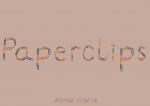This project is all about displaying information across different layouts, an online desktop design or televisual screen display, a smartphone/mobile device display and an A2 poster. I will need to take into consideration the different size of each of these outputs in order to create an effective design.
‘Why Web Design Is Losing It’s Soul‘ – this article looks at what it says on the tin. From this I hope to get ideas on what to do/not to do in my design. ‘
As responsive design becomes the norm, designers have developed a reliance on boxes and grids, argues Noah Stokes.
The article basically says that due to responsive web design (RWD), the web is “losing it’s magic”. Noah Stokes argues that everything is just boxes and grids, leaving no room for creativity. This stands out to me as I want to something a little different than just following a grid layout. Hopefully, by doing this, my designs will stand out a bit more than every other website out there.
Mobile Design
‘What makes a good mobile site? Google partnered with AnswerLab to research how a range of users interacted with a diverse group of mobile sites. From this research, Google established 25 principles of mobile site design to help companies build mobile sites that delight customers and drive conversions.’ – Google, Multi-Screen Resources
The results were grouped into five sections of mobile design: home & navigation, site search, commerce & conversions, form entry and usability and form factor. I will be looking through the results of each section and picking out the information that I think relates to what I am doing and will be helpful to me.
Home & Navigation
- Always put your key calls-to-action where you know users will see them, as it is easy to miss menu items
- A shorter menu with distinct categories is easier to navigate
- Use your logo as a button to return to the home page
Site Search
- Place your site search at the top of your homepage
Usability and Form Factor
- Don’t make users pinch to zoom; make sure everything can be seen clearly as it is (they found users got frustrated when they had to zoom).
I also found an article on ‘5 Big Mobile Design Trends of 2015‘ which highlights that ‘subtle colour palettes, animated elements, more scrolling, storytelling and blurred backgrounds’ are what’s going on in the world of mobile design right now. To make my design effective to the average person in 2015 I could incorporate some of these elements.





